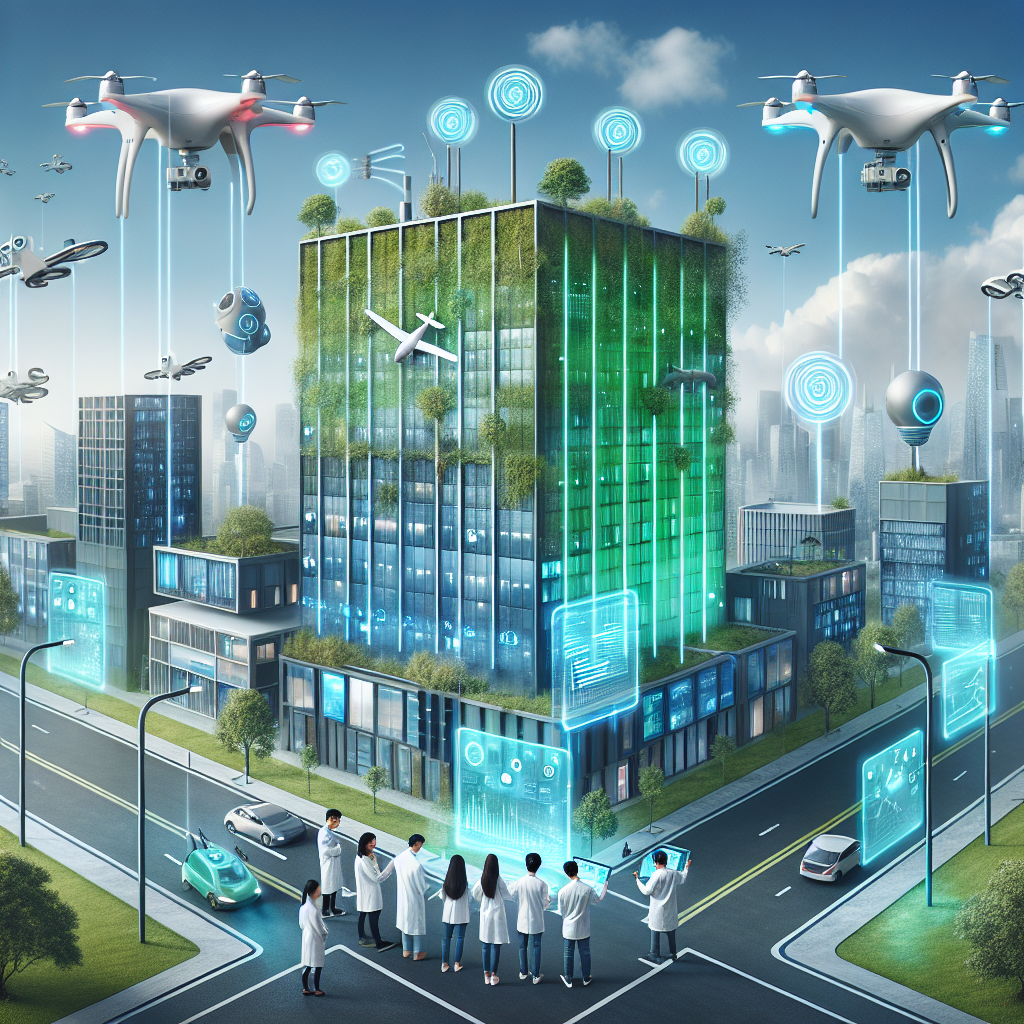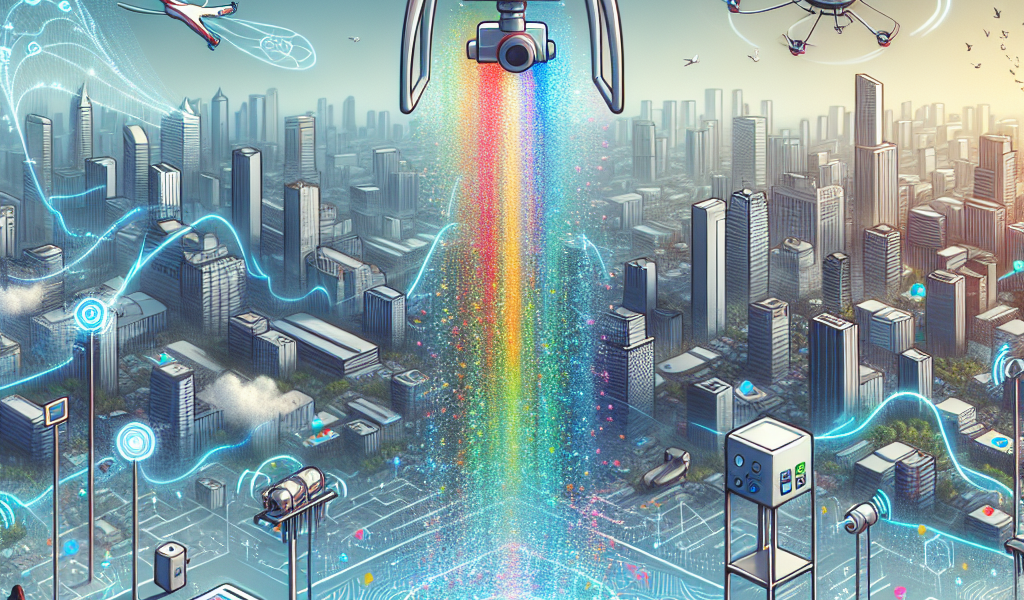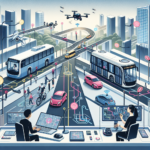-
Table of Contents
“Empowering Cleaner Air: Harnessing Technology for Real-Time Air Quality Insights”
Introduction

Air quality monitoring has become increasingly critical as urbanization and industrial activities continue to escalate, leading to higher levels of air pollution. Technological advancements are playing a pivotal role in enhancing the accuracy, efficiency, and accessibility of air quality monitoring systems. Modern sensors and data analytics tools are now capable of providing real-time data on various pollutants, enabling more precise tracking and management of air quality. Innovations such as Internet of Things (IoT) devices, satellite-based remote sensing, and machine learning algorithms are revolutionizing the way air quality is monitored and analyzed. These technologies not only offer more granular and comprehensive data but also facilitate predictive modeling and early warning systems, thereby empowering policymakers, researchers, and the public to take informed actions to mitigate air pollution and protect public health.
Advanced Sensor Technology In Air Quality Monitoring
In recent years, the importance of monitoring air quality has become increasingly evident as concerns about pollution and its impact on health and the environment continue to grow. Advanced sensor technology is playing a pivotal role in revolutionizing how we track and understand air quality, offering more precise, real-time data that can inform public health decisions and environmental policies. This technological evolution is not only enhancing our ability to monitor air quality but also empowering communities to take proactive measures to improve it.
One of the most significant advancements in air quality monitoring is the development of low-cost, high-precision sensors. Traditional air quality monitoring systems, often large and expensive, have been limited to specific locations, providing a narrow view of air quality. In contrast, modern sensors are compact, affordable, and can be deployed in a wide array of settings, from urban centers to rural areas. These sensors can measure a variety of pollutants, including particulate matter (PM2.5 and PM10), nitrogen dioxide (NO2), sulfur dioxide (SO2), and ozone (O3), with remarkable accuracy.
Moreover, the integration of these sensors with the Internet of Things (IoT) has further enhanced their capabilities. IoT-enabled sensors can transmit data in real-time to centralized databases, allowing for continuous monitoring and immediate analysis. This real-time data collection is crucial for identifying pollution hotspots, understanding pollution patterns, and responding swiftly to air quality issues. For instance, during a wildfire, IoT sensors can provide up-to-the-minute information on smoke dispersion, enabling authorities to issue timely health advisories and evacuation orders.
In addition to IoT integration, advancements in data analytics and machine learning are transforming how we interpret air quality data. These technologies can process vast amounts of data from numerous sensors, identifying trends and correlations that might not be apparent through manual analysis. Machine learning algorithms can predict air quality levels based on historical data and current conditions, offering valuable insights for policymakers and researchers. For example, predictive models can help cities anticipate pollution spikes and implement measures to mitigate their impact, such as traffic restrictions or industrial activity adjustments.
Furthermore, the accessibility of air quality data has improved significantly, thanks to user-friendly platforms and mobile applications. These tools allow individuals to monitor air quality in their vicinity, making informed decisions about outdoor activities and personal health. For instance, parents can check air quality levels before allowing their children to play outside, and individuals with respiratory conditions can avoid areas with high pollution levels. This democratization of data empowers citizens to take control of their environment and advocate for cleaner air.
The role of community-based monitoring initiatives cannot be overlooked in this technological landscape. Citizen science projects, where residents use portable sensors to collect air quality data, are gaining traction worldwide. These grassroots efforts not only supplement official monitoring networks but also raise awareness about local air quality issues. By involving the community, these projects foster a sense of ownership and responsibility towards the environment, encouraging collective action to address pollution.
In conclusion, advanced sensor technology is revolutionizing air quality monitoring by providing more accurate, real-time data that is accessible to both authorities and the public. The integration of IoT, data analytics, and machine learning is enhancing our understanding of air pollution and enabling proactive measures to improve air quality. As technology continues to evolve, it holds the promise of a future where clean air is not a luxury but a fundamental right for all.
Real-Time Data Analytics For Air Quality Improvement
In recent years, the intersection of technology and environmental science has led to significant advancements in air quality monitoring, offering new hope for tackling pollution and its adverse effects on public health. One of the most transformative developments in this field is the advent of real-time data analytics, which is revolutionizing how we understand and respond to air quality issues.
Traditionally, air quality monitoring relied on a network of stationary sensors that provided data at fixed intervals. While these sensors were effective in offering a general overview, they often fell short in capturing the dynamic nature of air pollution. Enter real-time data analytics, a game-changer that leverages advanced technologies such as the Internet of Things (IoT), big data, and machine learning to provide continuous, high-resolution insights into air quality.
The integration of IoT devices into air quality monitoring systems has been particularly impactful. These devices, often small and portable, can be deployed in various locations, from urban centers to remote areas, creating a dense network of sensors that collect data on pollutants like particulate matter, nitrogen dioxide, and ozone. This data is then transmitted in real-time to centralized platforms where it is analyzed and visualized, offering a granular view of air quality across different regions.
Moreover, the use of big data analytics allows for the processing of vast amounts of information collected from these sensors. By applying sophisticated algorithms, researchers can identify patterns and trends that were previously undetectable. For instance, they can pinpoint pollution hotspots, track the movement of pollutants, and even predict future air quality levels based on historical data and current conditions. This predictive capability is invaluable for city planners and policymakers who can use these insights to implement targeted interventions, such as traffic management or industrial regulations, to mitigate pollution.
Machine learning further enhances the power of real-time data analytics by enabling systems to learn and improve over time. These algorithms can be trained to recognize specific pollution sources, such as vehicle emissions or industrial discharges, and assess their impact on air quality. As the system processes more data, it becomes increasingly accurate in its predictions and recommendations, providing a robust tool for environmental management.
The benefits of real-time data analytics extend beyond just monitoring and prediction. They also play a crucial role in public awareness and engagement. Many cities now offer real-time air quality information through mobile apps and online platforms, empowering citizens to make informed decisions about their daily activities. For example, individuals with respiratory conditions can avoid outdoor exercise during high pollution periods, while parents can take precautions to protect their children from exposure.
Furthermore, real-time data analytics facilitate collaboration between different stakeholders, including government agencies, environmental organizations, and the private sector. By sharing data and insights, these groups can work together more effectively to address air quality challenges. For instance, businesses can adjust their operations to reduce emissions, while governments can develop policies that incentivize cleaner technologies and practices.
In conclusion, the integration of real-time data analytics into air quality monitoring represents a significant leap forward in our ability to understand and combat air pollution. By providing continuous, detailed insights and enabling predictive capabilities, these technologies offer a powerful tool for improving air quality and protecting public health. As we continue to refine and expand these systems, the potential for creating cleaner, healthier environments becomes increasingly attainable, marking a promising step towards a more sustainable future.
Integration Of IoT In Air Quality Monitoring Systems
The integration of the Internet of Things (IoT) in air quality monitoring systems is revolutionizing the way we understand and manage air pollution. As urbanization accelerates and industrial activities expand, the need for accurate, real-time air quality data has never been more critical. Traditional air quality monitoring methods, often reliant on stationary and expensive equipment, are being supplemented and, in some cases, replaced by IoT-enabled solutions that offer a more dynamic and comprehensive approach.
One of the most significant advantages of IoT in air quality monitoring is the ability to deploy a vast network of sensors across different locations. These sensors, often small and cost-effective, can be placed in various environments, from busy urban centers to remote rural areas. This widespread deployment allows for a more granular understanding of air quality variations, capturing data that would be impossible to obtain with traditional methods alone. Consequently, cities and communities can now identify pollution hotspots and take targeted actions to mitigate their impact.
Moreover, IoT-enabled air quality monitoring systems provide real-time data, which is crucial for timely decision-making. Traditional monitoring systems often suffer from delays in data collection and analysis, rendering them less effective in addressing immediate air quality concerns. In contrast, IoT sensors continuously transmit data to centralized platforms, where it can be analyzed and visualized almost instantaneously. This real-time capability empowers authorities to issue timely warnings to the public, implement traffic management strategies, or even temporarily shut down industrial activities to prevent air quality from deteriorating further.
In addition to real-time monitoring, the integration of IoT in air quality systems facilitates predictive analytics. By leveraging machine learning algorithms and historical data, these systems can forecast air quality trends and potential pollution events. This predictive capability is invaluable for proactive measures, allowing cities to prepare for and mitigate the effects of poor air quality before they become critical. For instance, schools and outdoor event organizers can use these forecasts to plan activities that minimize exposure to harmful pollutants.
Furthermore, the data collected by IoT sensors can be easily shared and accessed by various stakeholders, including government agencies, researchers, and the general public. Open access to air quality data fosters transparency and encourages community engagement in environmental issues. Citizens can monitor air quality in their neighborhoods through mobile apps and online platforms, empowering them to make informed decisions about their daily activities. This democratization of data also supports grassroots initiatives and advocacy efforts aimed at improving air quality standards and policies.
The integration of IoT in air quality monitoring systems also promotes collaboration between different sectors. For example, urban planners can use air quality data to design greener and more sustainable cities, while healthcare providers can correlate pollution levels with health outcomes to better understand the impact of air quality on public health. This interdisciplinary approach ensures that air quality management is not siloed but rather integrated into broader efforts to enhance urban living conditions.
Despite the numerous benefits, the adoption of IoT in air quality monitoring is not without challenges. Issues such as data privacy, sensor accuracy, and the need for robust infrastructure must be addressed to fully realize the potential of these technologies. However, ongoing advancements in IoT and related fields are continually improving the reliability and effectiveness of air quality monitoring systems.
In conclusion, the integration of IoT in air quality monitoring systems represents a significant leap forward in our ability to understand and manage air pollution. By providing real-time, granular data and enabling predictive analytics, these systems empower communities, authorities, and researchers to take informed and proactive measures to protect public health and the environment. As technology continues to evolve, the future of air quality monitoring looks promising, with IoT playing a pivotal role in creating cleaner and healthier living spaces for all.
Conclusion
Technology is significantly enhancing air quality monitoring by providing more accurate, real-time data through advanced sensors and IoT devices. These innovations enable better detection of pollutants, facilitate data sharing, and support predictive analytics, leading to more effective regulatory measures and public awareness. Consequently, technology is playing a crucial role in mitigating air pollution and protecting public health.





